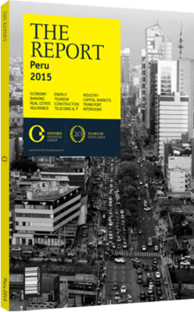María del Carmen de Reparaz, Vice-Minister of Tourism: Interview

Interview: Maria del Carmen de Reparaz
What infrastructure segments most need upgrading to enhance the tourism sector’s potential?
MARÍA DEL CARMEN DE REPARAZ: The country’s infrastructure deficit is taking a toll on the economy as a whole, and not just on tourism. For the necessary projects to be developed, and in the shortest amount of time possible, there has to be a high level of cooperation from all branches of the public sector, not only those ministries directly tasked with executing these projects.
For the tourism sector, new real estate projects are needed to increase and improve hotel capacity and at the same time diversify destinations. This has already been achieved, with international developers constantly arriving to the country. Regarding transportation infrastructure, upgrading and expanding the road network to connect cities is critical. Though much remains to be done, public-private partnership (PPP) projects and investor initiative will help.
Improvements are also needed for airport amenities nationwide and private firms will play a key role. There are plans to expand Lima airport to host 23m passengers per year, while the new Chinchero airport (Cusco) is set to host 2.2m passengers by 2018. A second terminal at Arequipa will be upgraded to accommodate 3m passengers per year and the new Pisco airport is set to have an annual capacity of 400,000. With these measures, overall economic growth will provide the potential for Peru to become a global tourism hub.
Some national attractions currently have insufficient funding for maintenance and upgrades. Is there too much focus placed on Cusco?
DE REPARAZ: The importance of Machu Picchu cannot be understated, but the focus needs to be on diversifying potential touristic sites to expand the market. In December 2014, the government will announce 25 new sites that are set to be most heavily promoted during 2015 and this initiative will continue for the foreseeable future. As for management and maintenance funds, Peru is already partnering with a diverse range of institutions such as the World Bank, which is helping develop tourism projects in Madre de Dios, Apurimac and Cusco; and the World Monuments Fund, which is helping restore Cusco’s historic centre, the Moon Huaca and the Santa Catalina Monastery, among other sites. These are just some of the international organisations that have a presence in Peru.
As for attracting foreign investment, there are two main tools being used. Firstly, Peru’s commercial offices abroad are working on promoting the country’s image all around the globe. There are 36 of these offices in Peruvian embassies, with 22 of them having been opened in the past two years.
The second method is through ProInversión and PromPerú, which are promoting PPPs with visible results. For 2015, this initiative includes two projects, worth $42m and $43m, respectively. All in all, Peru has the capacity to attract funds in order to grow, maintain its offers and become a regional tourism hub.
There could be 100m tourists from China by 2020. Should Peru try to attract them as a single country, or as part of a multi-country package?
DE REPARAZ: It is undeniable that the Asian market in general, and the Chinese market in particular, hold the biggest potential for the tourism sector. For the past 10 years Peru’s travel agencies have been working to target these markets, and though the impact was slow at first, there has been a surge since 2011. In the first four months of 2014, Chinese tourism to the country increased by 28.3%. Still, a multi-country package does present great potential, especially due to the Pacific Alliance. To maximise this there is an initiative called Tourism Quality for Pacific Alliance Countries, which looks to set unified standards of quality and service for all alliance members. Though the Asian market is on the rise, the tourism strategy cannot be exclusively focused there. Europe, with the elimination of the Schengen Visa for Peruvians, and the domestic market, with its rising middle class, hold great potential
You have reached the limit of premium articles you can view for free.
Choose from the options below to purchase print or digital editions of our Reports. You can also purchase a website subscription giving you unlimited access to all of our Reports online for 12 months.
If you have already purchased this Report or have a website subscription, please login to continue.

